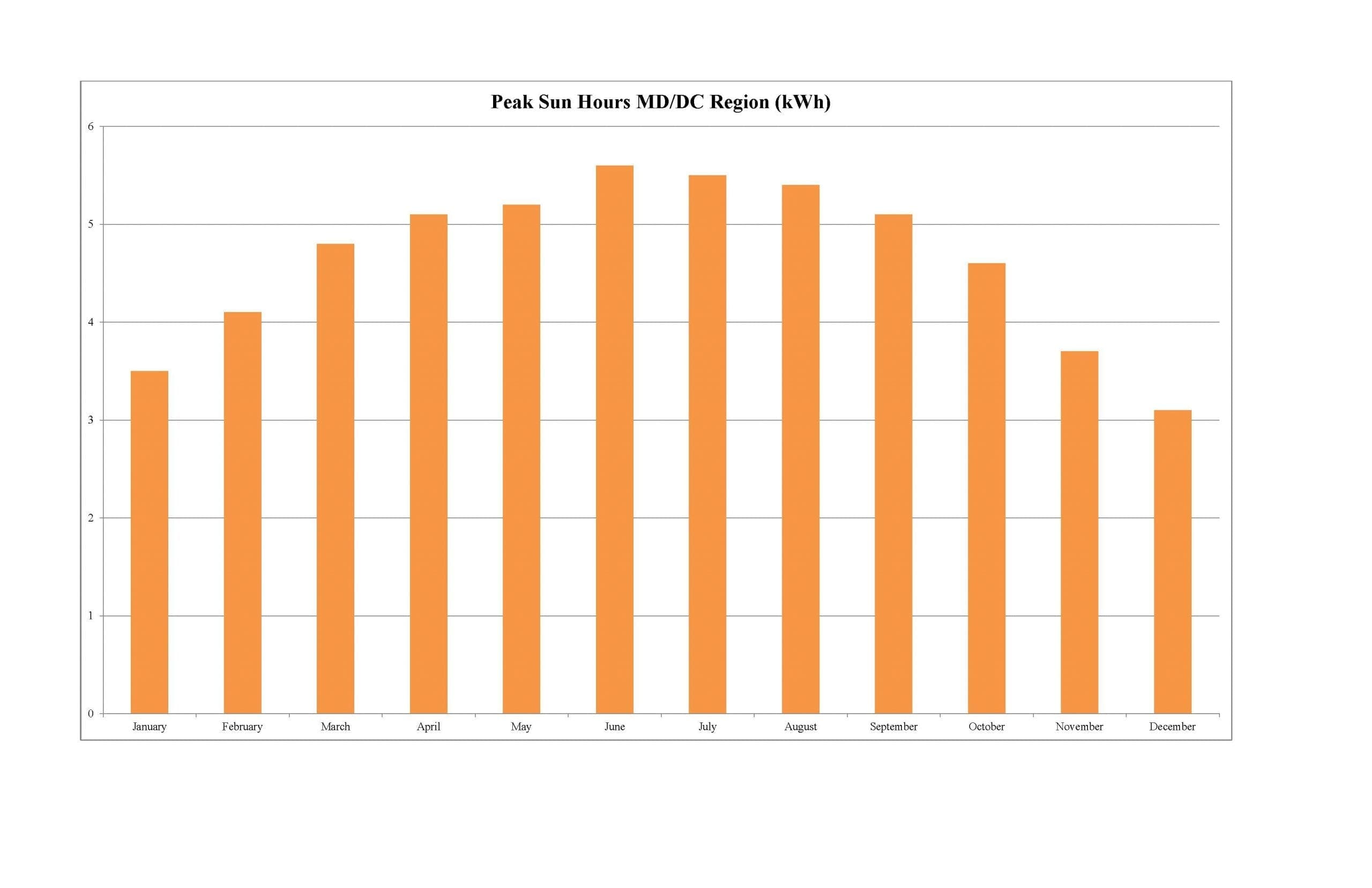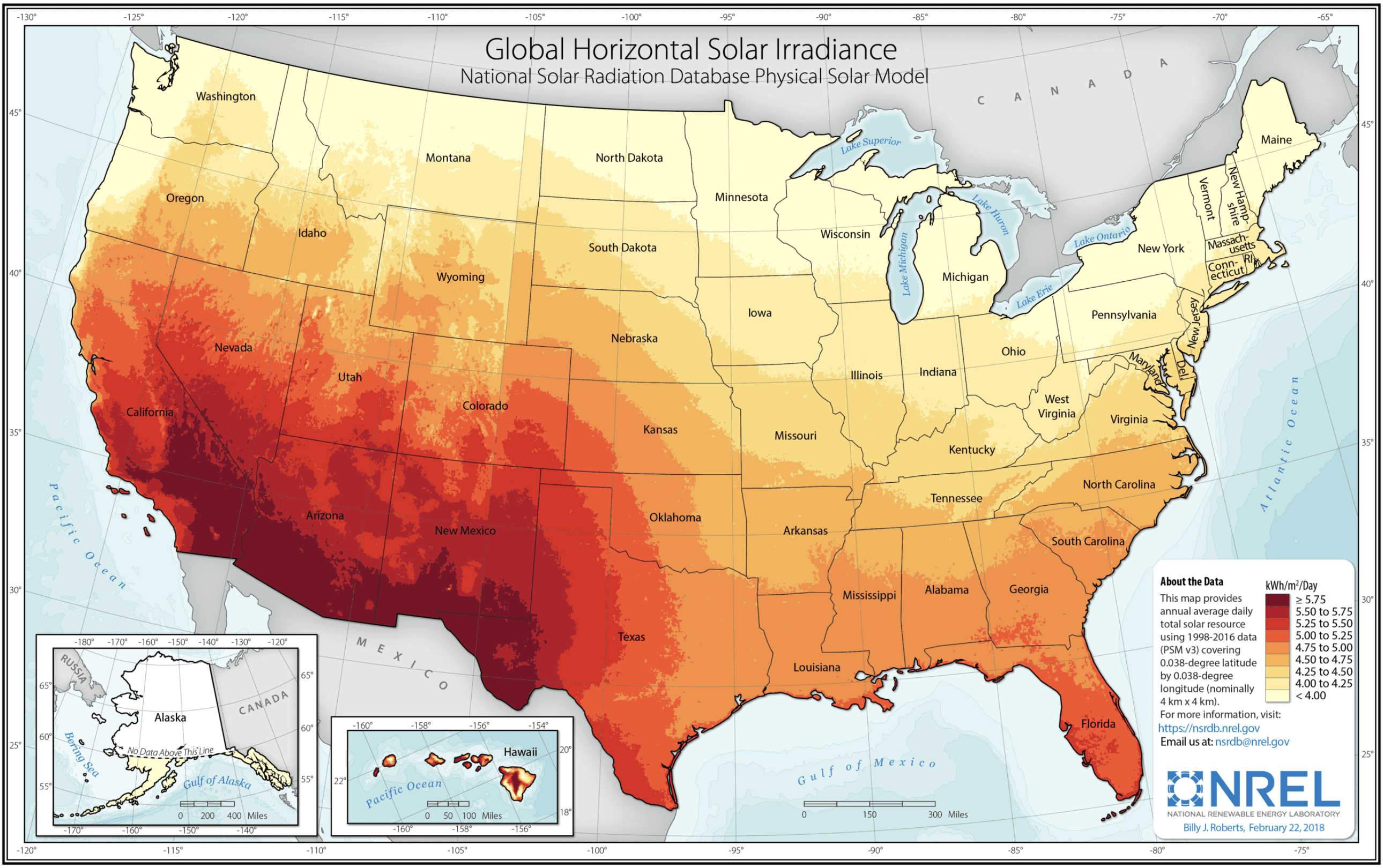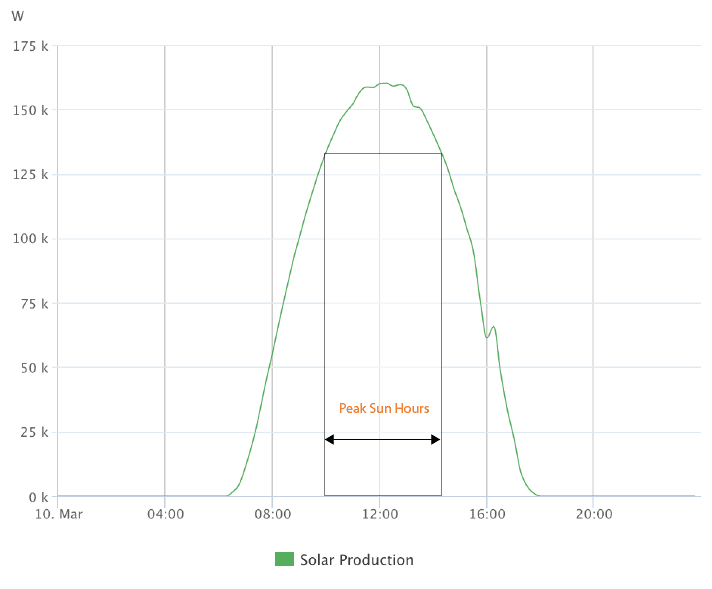
Peak Sun Hours
The average daily sun hours in units of kWh/m2 per day is referred to as “peak sun hours.” A peak sun-hour is roughly the amount of solar energy striking a 1-square-meter area perpendicular to the sun’s location over a 1-hour period straddling solar noon in the summertime.
So we can compare apples to apples, the amount of power is standardized at 1,000 watts (1 kilowatt) hitting that 1-square meter surface. By adding up the various amounts of solar irradiation over the course of a day, and counting them as units equivalent to 1 solar-noon midsummer hour (1,000 watts per square meter for 1 hour), we get a useful comparison number—the peak sun-hour.
Being able to calculate the peak sun hours is useful for commercial solar power system installations because PV modules are often rated at an input rating of 1kW/m2.


